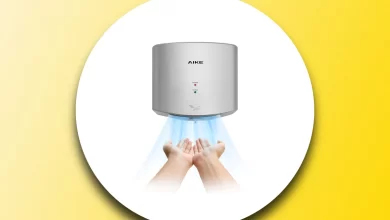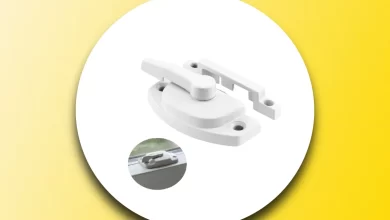
Magnetic door locks, also known as electromagnetic locks or maglocks, function by utilizing the power of electromagnetism. These locks consist of an electromagnet mounted on the door frame and an armature plate on the door itself. When electricity flows through the coil of wire within the electromagnet, it generates a strong magnetic field that attracts the armature plate, thereby securely locking the door. This locking mechanism is highly effective, as it prevents unauthorized access and can be easily controlled through access control systems. In essence, magnetic door locks work by harnessing the principles of electromagnetism to provide efficient, secure, and convenient access control solutions for various applications.
| Aspect | Magnetic Door Locks | Traditional Mechanical Locks |
|---|---|---|
| Locking Mechanism | Electromagnetic force holds the door shut. | Physical mechanisms like tumblers, pins, or levers engage to prevent the door from opening. |
| Key or Access Method | Keyless entry with options like key cards, PINs, biometrics, or smartphone apps. | Typically require a physical key or combination to unlock. |
| Security Level | High security due to the powerful magnetic force and advanced authentication options. | Moderate security; vulnerable to lock-picking and key duplication. |
| Ease of Access Control | Easily integrated into access control systems, allowing centralized management and monitoring. | Limited access control capabilities, usually requiring manual key distribution and management. |
| Response Time | Quick response time to lock and unlock the door, especially in smart setups. | Slightly slower response time as it involves physical manipulation of the lock mechanism. |
| Fail-Safe Design | Typically designed with fail-safe features to allow easy exit during emergencies, even if the power fails. | Fail-secure or fail-locked by default; may require additional mechanisms for emergency exit. |
| Installation and Wiring | May require professional installation due to electrical components and wiring. | Relatively straightforward installation; suitable for DIY. |
| Vulnerability to Tampering | Susceptible to tampering with electrical components, wiring, or magnets. | Vulnerable to lock-picking, bumping, or forced entry methods. |
| Environmental Factors | Sensitive to extreme environmental conditions; may require additional protection. | Tolerant of various environmental conditions, depending on lock type and materials. |
| Maintenance Requirements | Low maintenance due to fewer moving parts; periodic checks for wiring and power supply. | Moderate maintenance required to address wear and tear, lubrication, and key-related issues. |
| Compatibility with IoT | Easily integrated with IoT and smart home/smart building ecosystems for automation and remote control. | Limited IoT compatibility; requires additional smart lock devices for automation. |
| Cost | Initial cost may be higher due to technology and integration; potential long-term cost savings in security and efficiency. | Lower initial cost; ongoing expenses related to key replacement and rekeying. |
Contents
- How does a magnetic lock (maglock) work?
- The Basics of Magnetic Door Locks
- How Do Magnetic Door Locks Work?
- Applications of Magnetic Door Locks
- Advantages of Magnetic Door Locks
- Disadvantages of Magnetic Door Locks
- Why do the magnetic door locks fail?
- Troubleshooting magnetic door locks
- 1. Check the Power Supply:
- 2. Inspect Wiring and Connections:
- 3. Test the Access Control System:
- 4. Check for Obstructions or Alignment Issues:
- 5. Verify Voltage and Polarity:
- 6. Test the Lock Manually:
- 7. Inspect for Tampering:
- 8. Review Access Logs and Reports:
- 9. Consult the User Manual:
- 10. Seek Professional Assistance:
- 11. Preventive Maintenance:
- Advancements in Magnetic Door Lock Technology
- FAQs
How does a magnetic lock (maglock) work?
In the realm of access control and security, the magnetic lock, often referred to as a maglock, stands as a beacon of innovation and reliability. To the untrained eye, it may appear as a simple, unassuming device, but beneath its unpretentious exterior lies a remarkable and intricate mechanism. The fundamental question we embark upon in this discourse is: How does a magnetic lock truly work?
Understanding the inner workings of a magnetic lock is akin to peering into the realm of electromagnetism—a realm where science meets security. At its core, a magnetic lock is composed of two primary components: an electromagnet affixed to the door frame and an armature plate mounted on the door itself. The key to its operation lies in the wondrous world of electrical currents.
The Basics of Magnetic Door Locks
Magnetic door locks, often referred to as electromagnetic locks or maglocks, are an ingenious piece of technology designed to provide secure access control to various premises. These locks have gained popularity due to their reliability and effectiveness in keeping unauthorized individuals out. In this article, we’ll delve into the fascinating world of magnetic door locks, exploring how they work, their applications, and their advantages.
How Do Magnetic Door Locks Work?
Mechanism and Components
To understand how magnetic door locks work, let’s break down their components and the process involved:
- Electromagnet: At the heart of a magnetic door lock is the electromagnet, which is mounted on the door frame. This electromagnet consists of a coil of wire wound around a core material. When an electrical current flows through this coil, it generates a magnetic field.
- Armature Plate: On the door itself, there is an armature plate that is made of a ferrous material, such as iron or steel. This plate is aligned with the electromagnet when the door is closed.
- Access Control System: Magnetic door locks are typically integrated with an access control system, which includes a control panel, card reader, keypad, or other devices for authentication.
- Power Supply: The system is powered by an electrical supply, usually low-voltage DC power. The power supply provides the necessary voltage to the electromagnet.
Operation
Now, let’s see how these components come together to secure a door:
- Door Closure: When the door is closed, the electromagnet is aligned with the armature plate. At this point, the electromagnet is typically de-energized, meaning no electrical current flows through it.
- Authentication: To gain access, an individual must use an access control method such as swiping an access card, entering a PIN, or using biometric verification. When the authorized user is verified, the control system sends a signal to the power supply.
- Electromagnet Activation: Upon receiving the signal, the power supply sends an electrical current to the electromagnet. This energizes the electromagnet, creating a strong magnetic field.
- Magnetic Attraction: The powerful magnetic field generated by the electromagnet attracts the armature plate towards it, effectively locking the door in place. The magnetic force is strong enough to prevent the door from being opened without proper authorization.
- Access Granted: Once the authorized user is ready to leave or access is revoked, the control system simply cuts off the electrical current to the electromagnet. This de-energizes the electromagnet, and the armature plate is released, allowing the door to be opened freely.
Maintaining Security
One key advantage of magnetic door locks is their inherent fail-safe nature. Even in the event of a power failure or system malfunction, the electromagnet loses its magnetic force, immediately releasing the door. This ensures that occupants can always exit the premises in case of an emergency.
Applications of Magnetic Door Locks
Magnetic door locks find application in a wide range of scenarios where controlled access is essential. Below are some common uses:
Commercial and Industrial Security
In commercial and industrial settings, magnetic door locks are often used to enhance security. They are suitable for securing main entrance doors, server rooms, sensitive areas, and offices. Access is granted only to authorized personnel, reducing the risk of unauthorized entry or theft.
Magnetic door locks are also frequently employed in data centers, where physical security is of utmost importance. These locks provide an additional layer of protection for valuable equipment and data.
Institutional Buildings
Institutions such as schools, universities, and healthcare facilities utilize magnetic door locks to control access to various parts of the premises. These locks help ensure that only authorized individuals can enter areas like classrooms, labs, and patient rooms. In emergencies, the fail-safe feature allows for quick evacuation.
Retail Stores
Retail stores use magnetic door locks as a part of their overall security strategy. They can be integrated with the store’s alarm system, triggering an alert if someone tries to force the door open or if unauthorized access is detected.
Residential Use
While less common in residential settings, magnetic door locks can be installed on front doors for added security. Homeowners who prioritize security may choose these locks to prevent break-ins. However, they may require additional hardware and professional installation.
Advantages of Magnetic Door Locks
Magnetic door locks offer several advantages that make them a popular choice for access control:
High Security
One of the primary benefits of magnetic door locks is their high level of security. The magnetic force they exert is substantial, making it extremely difficult for unauthorized individuals to force the door open. This level of security is especially crucial in commercial and institutional settings where sensitive information or valuable assets are stored.
Quick Response Time
Magnetic door locks can be activated and deactivated almost instantly. When an authorized user presents their credentials, the lock responds quickly, allowing for seamless access. This is particularly important in high-traffic areas where efficiency is paramount.
Fail-Safe Operation
The fail-safe design of magnetic door locks ensures that occupants can always exit the building in emergencies. In case of a power outage or system malfunction, the lock disengages automatically, preventing anyone from being trapped inside.
Integration with Access Control Systems
Magnetic door locks can be easily integrated into comprehensive access control systems. This allows for centralized management of access permissions, audit trails, and remote monitoring. It also provides the flexibility to customize access for different users and time schedules.
Durability and Low Maintenance
Magnetic door locks are known for their durability and low maintenance requirements. Unlike traditional mechanical locks that can wear out over time, magnetic locks have fewer moving parts, reducing the likelihood of mechanical failures.
Disadvantages of Magnetic Door Locks
While magnetic door locks offer numerous advantages, it’s essential to be aware of their limitations as well:
Vulnerability to Power Failures
Magnetic door locks rely on a continuous supply of electrical power to maintain their locked state. In the event of a power failure or a deliberate power cut, the lock will disengage, potentially compromising security. To address this issue, many installations include backup power sources like batteries or generators.
Cost Considerations
The initial cost of purchasing and installing magnetic door locks can be higher than that of traditional mechanical locks. However, it’s important to weigh this expense against the enhanced security and convenience they provide.
Professional Installation
Proper installation of magnetic door locks is crucial to ensure their effectiveness and reliability. It often requires the expertise of a professional locksmith or security technician, which can add to the overall cost.
Compatibility with Door Types
Magnetic door locks may not be suitable for all types of doors. They work best with doors made of ferrous materials, such as steel or iron. Wooden doors, for example, may require additional reinforcement to support the magnetic locking mechanism.
Why do the magnetic door locks fail?
Magnetic door locks, like any mechanical or electronic device, can fail or experience issues for various reasons. Understanding the potential causes of magnetic door lock failures is essential for addressing and preventing problems. Here are some common reasons why magnetic door locks may fail:
1. Power Interruptions: Magnetic door locks rely on a continuous supply of electrical power to remain locked. If there is a power interruption, such as a blackout or power surge, the lock may disengage, allowing the door to open. To mitigate this risk, many installations include backup power sources like batteries or generators to keep the locks operational during power outages.
2. Wiring Problems: Issues with the wiring connecting the magnetic lock to the power source, access control system, or backup power supply can lead to lock failure. Loose, damaged, or corroded wires can disrupt the flow of electricity and cause the lock to malfunction.
3. Electrical Component Failures: The components within the magnetic door lock, including the electromagnet, control board, or power supply, can fail over time due to wear and tear, manufacturing defects, or electrical surges. When any of these components fail, the lock may not function as intended.
4. Unauthorized Tampering: Attempts to tamper with or disable the lock can lead to failure. Intruders may try to manipulate the wiring, use strong magnets to interfere with the lock’s operation, or physically damage the lock to gain unauthorized access.
5. System Malfunctions: The access control system that governs the magnetic door lock’s operation may experience malfunctions or software glitches. These issues can result in improper authorization or failure to send the correct signals to the lock, preventing it from locking or unlocking as expected.
6. Environmental Factors: Magnetic door locks can be sensitive to environmental conditions. Extreme temperatures, moisture, dust, or exposure to corrosive substances can affect the lock’s components, potentially causing failure over time. Proper installation and protection from environmental factors are essential.
7. Inadequate Installation: Incorrect installation of the magnetic door lock can lead to performance problems. If the lock is not aligned properly with the armature plate on the door, it may not engage or disengage correctly. Additionally, improper wiring or insufficient power supply can impact the lock’s reliability.
8. Overloading the Lock: Magnetic door locks are designed to withstand a certain amount of force. If excessive force is applied to the door, such as attempting to force it open with a crowbar or other tools, it can cause the lock to fail or become damaged.
9. Lack of Maintenance: Like any security device, magnetic door locks require periodic maintenance to ensure they function correctly. Neglecting maintenance, such as failing to clean and lubricate components or replace worn-out parts, can lead to lock failure over time.
10. Aging and Wear: Over the years, magnetic door locks may naturally degrade and wear out due to normal usage. Electromagnets, in particular, can weaken over time, reducing the lock’s holding force. Regular inspections and replacement of aging components can help prevent this issue.
To minimize the risk of magnetic door lock failures, it’s crucial to invest in quality locks, ensure proper installation, conduct regular maintenance, and have backup power solutions in place. Additionally, a robust access control system with monitoring and alert features can help detect and respond to potential issues before they lead to security breaches.
Troubleshooting magnetic door locks
Troubleshooting magnetic door locks is essential to maintain their functionality and security. If you encounter issues with a magnetic door lock, here are some steps you can take to diagnose and resolve the problem:
1. Check the Power Supply:
- Ensure that the power supply to the magnetic door lock is functioning correctly. Check for loose or disconnected power cables.
- Verify that there is no power outage, and the electrical circuit supplying power to the lock is not tripped.
- If the lock uses backup power sources, such as batteries or a UPS (Uninterruptible Power Supply), check their status and replace them if necessary.
2. Inspect Wiring and Connections:
- Examine the wiring connecting the magnetic lock to the power supply, access control system, and any backup power sources. Look for damaged, frayed, or loose wires.
- Reconnect any disconnected wires and ensure they are securely fastened.
- Inspect the wiring for signs of corrosion, as this can disrupt the electrical flow.
3. Test the Access Control System:
- Verify that the access control system, whether it’s a card reader, keypad, or biometric reader, is functioning correctly.
- Ensure that authorized users are using valid credentials or methods to gain access.
- Test the access control system’s communication with the magnetic lock by trying to lock and unlock the door using authorized credentials.
4. Check for Obstructions or Alignment Issues:
- Inspect the door and frame for any obstructions that might prevent the door from closing or the magnetic lock from engaging.
- Ensure that the armature plate on the door aligns correctly with the electromagnet on the frame when the door is closed.
- Clear any debris or foreign objects that may interfere with the proper operation of the lock.
5. Verify Voltage and Polarity:
- Check the voltage supplied to the magnetic lock to ensure it matches the lock’s specifications. Using an incorrect voltage can lead to lock failure.
- Verify the polarity of the electrical connections. Ensure that the positive and negative terminals are correctly connected.
6. Test the Lock Manually:
- If possible, manually apply power directly to the magnetic lock to see if it engages and disengages. This test can help determine if the lock itself is functioning correctly.
- Be cautious when conducting manual tests and follow safety precautions.
7. Inspect for Tampering:
- Check for signs of tampering or attempts to bypass the lock, such as damaged wires, unusual markings, or physical damage to the lock or door.
8. Review Access Logs and Reports:
- If your access control system keeps logs and reports of door activity, review them for any anomalies or patterns that may indicate a problem.
- Look for repeated instances of the lock failing to engage or disengage.
9. Consult the User Manual:
- Refer to the user manual or documentation provided with the magnetic lock for troubleshooting guidance specific to that model.
10. Seek Professional Assistance:
- If you are unable to identify or resolve the issue, consider contacting a professional locksmith or a technician with expertise in access control systems and magnetic door locks.
11. Preventive Maintenance:
- Implement a preventive maintenance schedule for your magnetic door locks. Regularly inspect and clean the locks, lubricate moving parts, and replace any worn-out components.
Advancements in Magnetic Door Lock Technology
Recent Technological Developments
In recent years, advancements in technology have brought about several improvements in magnetic door lock systems, enhancing their functionality and security. Let’s explore some of these innovations:
1. Smart Integration
Modern magnetic door locks can now be seamlessly integrated into smart access control systems. This means that you can control and monitor your locks remotely using a smartphone app or a computer. This level of connectivity offers added convenience and flexibility in managing access to your premises.
For example, you can remotely grant access to a visitor or employee, receive real-time notifications of door activity, and even check the status of the locks from anywhere with an internet connection. Smart integration also allows for easy integration with other smart devices, enhancing the overall security and automation of your property.
2. Biometric Authentication
Biometric authentication is becoming increasingly common in access control systems, including magnetic door locks. This technology allows for highly secure and convenient access using unique biological features such as fingerprints, retinal scans, or facial recognition.
Biometric authentication adds an extra layer of security, as it is extremely difficult for unauthorized individuals to replicate or bypass these biometric identifiers. It also eliminates the need for physical access cards or PINs, reducing the risk of credential theft or loss.
3. Enhanced Monitoring and Reporting
Modern magnetic door lock systems offer advanced monitoring and reporting capabilities. They can generate detailed access logs and reports, providing valuable insights into who accessed the door, when, and for how long. This information can be invaluable for security audits, investigations, or compliance requirements.
Additionally, some magnetic locks are equipped with built-in cameras or video intercom systems, allowing for visual verification of visitors before granting access. These features enhance security and help prevent unauthorized entry.
4. Wireless Connectivity
Wireless technology has revolutionized the installation and operation of magnetic door locks. Wireless magnetic locks eliminate the need for complex wiring, making installation faster and more cost-effective. They can communicate with the access control system using wireless protocols such as Wi-Fi or Bluetooth.
Wireless locks are especially useful for retrofitting existing doors and buildings, as they can be easily added to the system without the need for extensive wiring modifications. They also offer greater flexibility in terms of lock placement and can be powered by batteries or low-voltage power sources.
5. Anti-Tamper Features
To counter potential tampering or forced entry attempts, many modern magnetic door locks are equipped with anti-tamper features. These features can include sensors that detect if someone tries to manipulate or tamper with the lock, triggering alarms or notifications.
Additionally, some locks have built-in mechanisms that can withstand physical attacks, such as drilling or prying, making it even more challenging for intruders to bypass the lock.
Future Trends and Innovations
The field of access control and security is continually evolving, and magnetic door locks are no exception. Here are some potential future trends and innovations to watch for:
1. Artificial Intelligence (AI) Integration
AI technology is expected to play a significant role in the future of magnetic door locks. AI-powered systems can analyze patterns of access and behavior, helping to detect anomalies or potential security threats. These systems can learn and adapt to changing security needs, making them highly effective in preventing unauthorized access.
2. Energy-Efficient Designs
Efficiency and sustainability are becoming more critical in all aspects of technology, including door locks. Future magnetic locks may incorporate energy-efficient features, such as power-saving modes and the use of renewable energy sources, to reduce their environmental impact and operating costs.
3. Multi-Factor Authentication
To further enhance security, future magnetic door locks may incorporate multiple layers of authentication. This could involve a combination of biometrics, access cards, PINs, and even smartphone-based authentication methods to ensure that only authorized individuals gain access.
4. Seamless Integration with IoT
The Internet of Things (IoT) is expanding rapidly, and magnetic door locks are likely to become an integral part of IoT ecosystems. This integration could enable locks to communicate with other smart devices, such as surveillance cameras, alarms, and lighting systems, creating a more comprehensive and responsive security network.
FAQs
Magnetic door locks, also known as electromagnetic locks or maglocks, operate by using the principles of electromagnetism. These locks consist of an electromagnet mounted on the door frame and an armature plate on the door itself. When an electrical current is applied to the coil of wire within the electromagnet, it generates a powerful magnetic field. This magnetic force attracts the armature plate, effectively locking the door. When the electrical current is removed, the lock disengages, allowing the door to open. The process is quick, efficient, and secure, making magnetic door locks a popular choice for access control in various settings.
Yes, magnetic door locks are considered highly secure. They offer a strong and reliable locking mechanism. The magnetic force they generate makes it challenging for unauthorized individuals to force the door open. Additionally, many magnetic door locks are integrated with access control systems, which allow for centralized management of access permissions and monitoring. This added layer of security makes them a preferred choice for securing sensitive areas in commercial, institutional, and residential settings.
Magnetic door locks are designed with fail-safe features. In the event of a power outage or system malfunction, they automatically disengage, allowing the door to be opened manually. This ensures that occupants can always exit the premises in emergencies, even when electrical power is unavailable. Some installations include backup power sources, such as batteries or generators, to maintain lock operation during power outages.
Yes, magnetic door locks are often integrated with access control systems. They can be connected to card readers, keypads, biometric scanners, or smartphone apps for authentication. This integration allows for centralized management of access permissions, audit trails, and remote monitoring. It also provides the flexibility to customize access for different users and time schedules, enhancing overall security and control.
Magnetic door locks offer several advantages, including high security, quick response times, fail-safe operation, integration with access control systems, durability, and low maintenance requirements. They are also suitable for various applications, from commercial and industrial security to residential use, making them a versatile choice for access control needs.
Read More:



